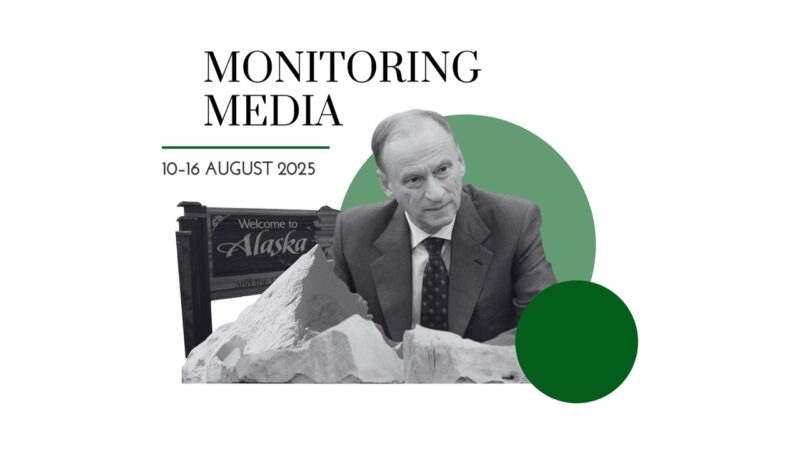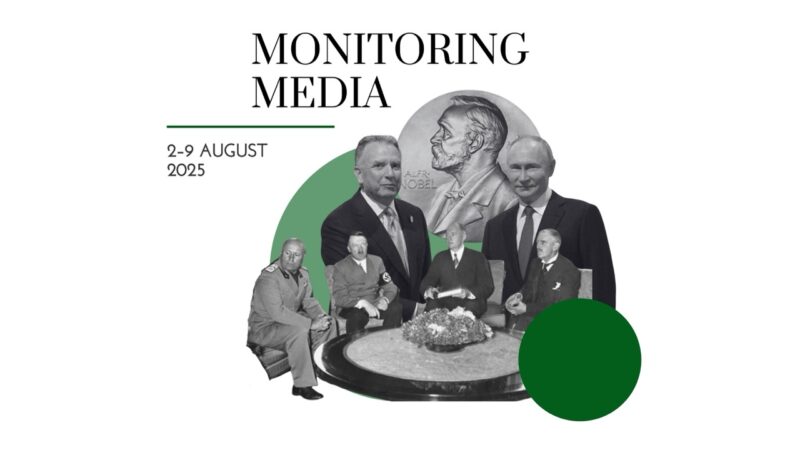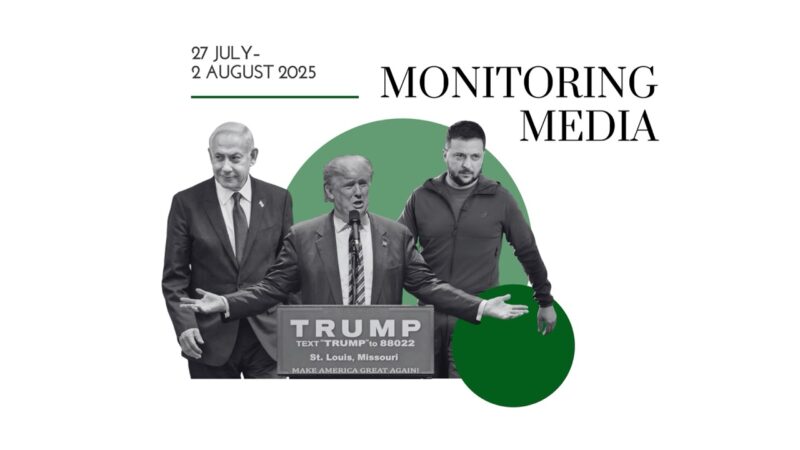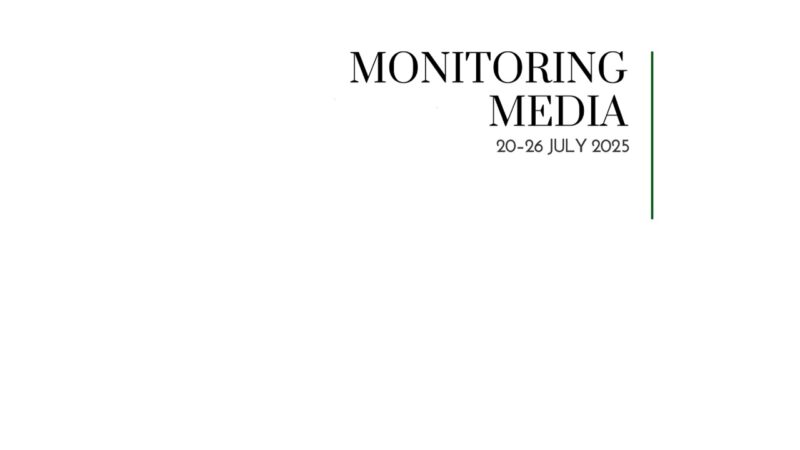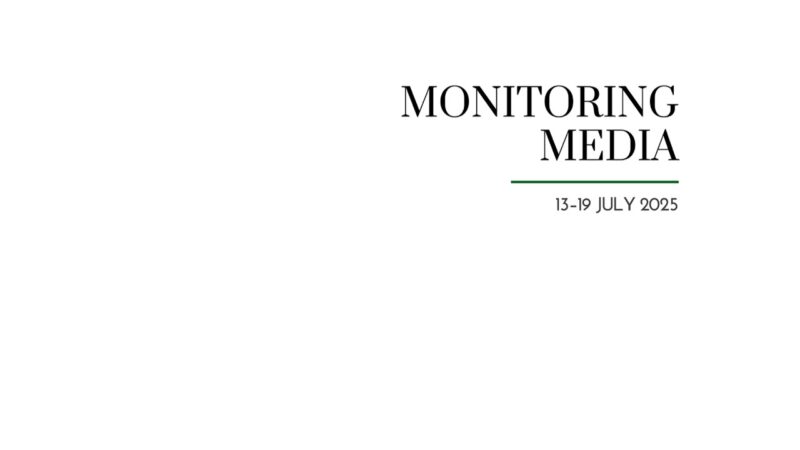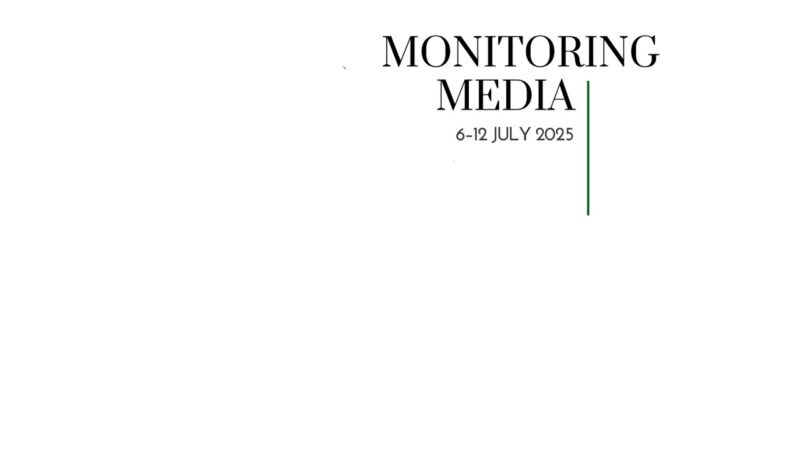Washington must not allow Moscow to take over Crimea

CIUS weekly report on North American media coverage of Ukrainian affairs, 27 April–3 May 2025
Five publications (The Wall Street Journal, Foreign Policy, Financial Times, The Globe and Mail, and National Post) were selected to prepare this report on how Ukraine has been portrayed in the North American press during the past week. The sample was compiled based on their impact on public opinion as well as on their professional reputation, popularity among the readership, and topical relevance. These publications represent centrist viewpoints on the political spectrum.
Featured topics
This MMS report covers only the most-read and relevant articles about Ukraine, as ranked by the respective North American publications themselves in the past week. Its scope covers promoted articles on home pages and articles from special sections on Ukraine, with the hashtag #Ukraine, from the paper editions of the publications, and about Ukraine from opinion columns and editorials.
- The world and Ukraine: Washington must force Russia to pay for peace in Ukraine; Washington must not allow Moscow to take over Crimea; Washington must reconsider its policy toward Ukraine; Canada should lead on seizure of frozen Russian assets for Ukraine.
- Russia at war: Trump-brokered peace deal could cement Russian gains.
MMS summaries
Washington must force Russia to pay for peace in Ukraine. Seth G. Jones (Wall Street Journal) notes that as Moscow is prolonging the Russo-Ukrainian war, Washington should increase pressure on it. Russia’s negotiation strategy is similar to the one the Kremlin used during the war in Syria: “drag out the peace talks, wait for the other side to become so frustrated with diplomacy that its leaders walk away, and ramp up the war.” Moscow has at least two vulnerabilities that Washington can exploit in putting pressure on the Kremlin. First, the Russian economy is weak: “Increased sanctions against Russia’s energy sector would likely cause significant pain. Energy sanctions could be combined with sanctions against other Russian exports, such as minerals, metals, agricultural goods and fertilizers.” Second, Russia is vulnerable due to its losses from the war against Ukraine: “Moscow has lost more than three times as many soldiers in Ukraine as in all Russian and Soviet wars combined between the end of World War II and February 2022.” The US should give Ukraine more weapons, intel, and training to make the war more costly for Russia. Jones concludes, “America holds most of the cards here. It needs to start playing them.”
Washington must not allow Moscow to take over Crimea. David J. Kramer (Foreign Policy) argues that the US should not give Crimea to Russia, even for peace. Washington’s latest peace proposal includes a reward for Russia for its aggression against Ukraine: “According to the text of a U.S. peace proposal…the United States would—in exchange for a permanent cease-fire—provide de jure recognition of Russian control of Crimea and de facto recognition of Russian control of most of the Ukrainian regions of Luhansk, Zaporizhzhia, Donetsk, and Kherson.” Recognizing Crimea as Russian would undermine international law, encourage other authoritarian regimes to seize territory, and harm US national security. According to Kramer, “Putin should not be rewarded for the alleged war crimes, crimes against humanity, and acts of genocide that he and his forces have committed in a war that he started. We should all hope that the Trump administration gets this right.”
Washington must reconsider its policy toward Ukraine. Stephen Sestanovich (Foreign Policy) believes that the Trump administration’s desired detente with Russia requires a Ukrainian peace that lasts. A change in Washington’s approach to Ukraine and Russia could help bring peace closer. President Trump must understand that it is practically impossible to achieve a complete settlement of the war through a “big, beautiful” agreement, and therefore it is worth working on an alternative option: “an end to hostilities that punts the big unresolved issues to some sort of open-ended ‘peace process’ (in which they may not ever be resolved).” To do this, it is necessary to acknowledge the mistakes of its policy toward Ukraine. Concessions to Moscow, such as promising to recognize Crimea as Russian, or that the US will withdraw from the negotiation process and leave Ukraine alone with Russia, would only encourage the Kremlin to take further aggressive action. To force President Putin to the negotiating table, “Trump has to show him that his military hopes are misplaced and that Russian forces have reached their high-water mark and only setbacks lie ahead. An early ramp-up of U.S. military support for Ukraine would send that message; a tightening of sanctions would make it clearer still.” According to Sestanovich, “[Trump] has acted as though Ukraine were a short-term problem and Russia the long-term opportunity. Almost the opposite is true. He won’t stop the killing for good unless he treats Russia as his immediate obstacle and Ukraine as the ultimate measure of his achievement.”
Trump-brokered peace deal could cement Russian gains. Mary Elise Sarotte (Financial Times) writes that a potential peace deal between Ukraine and Russia, especially one shaped under US pressure, risks legitimizing Russian aggression and opening the door to renewed aggression and geopolitical instability in Europe. The author warns that such an accord could “reward Russian aggression and leave open the chance of renewed conflict once Moscow reconstitutes its forces.” The symbolic timing—with Donald Trump pushing for a ceasefire around Russia’s May 9 Victory Day parade—and Xi Jinping’s expected attendance at the celebration only amplify concerns that the deal may serve Moscow’s interests more than those of Ukraine or Europe. Among the most contentious issues is the status of Crimea and other Russian-occupied regions. The Trump administration appears willing to formally recognize Crimea as part of Russia, a step that would set a dangerous precedent. Sarotte argues that this would result in a “rump Ukraine,” losing key parts of its sovereign territory, and stresses the importance of learning from Cold War history: “West Germany consistently maintained those were inner-German, not foreign, relations” with East Germany, keeping the hope of reunification alive. A US-endorsed peace accord that affirms Russia’s land grab could embolden Putin to test NATO’s Article 5 and would send a broader message that “Washington may be willing to formalise post-2022 gains as well.” This would hasten a shift to a world of spheres of influence, with Moscow, Beijing, and Washington carving up the globe. “For these reasons, a lot hangs on a few words on a piece of paper that may or may not be signed in the coming weeks,” Sarotte concludes. “Those few words could signal the arrival of a much darker future.”
Trump shifts to minerals deal with Ukraine as peace talks stall. Mark MacKinnon (Globe and Mail) notes that Donald Trump’s long-promised peace deal with Russia has failed to materialize, leading his administration to pivot toward a minerals-based economic partnership with Ukraine while quietly re-opening the door to renewed US military support. After months of tension with Kyiv, the Trump administration signed a 50/50 minerals agreement with Kyiv that includes 55 critical resources, along with oil and gas, with profits earmarked for a joint reconstruction fund. Treasury Secretary Scott Bessent called it a “total economic partnership,” adding that it signals to Moscow that “there is no daylight between the Ukrainian people and the American people.” Though the pact does not guarantee weapons transfers or security commitments, it offers Ukraine a pathway to resume arms purchases—a significant shift after Trump’s February outburst, when he accused President Volodymyr Zelensky of “gambling with World War Three.” The deal also suggests that Trump now views Putin as the primary obstacle to a peace deal and his potential diplomatic legacy, after the Russian president repeatedly rebuffed American overtures. Despite Trump’s prior claim that he could end the war “in 24 hours,” the 100-day milestone for peace has passed with little progress, MacKinnon writes, as fighting continues across Ukraine—including a deadly Russian drone barrage that killed civilians in Kyiv, Odesa, and Myrnohrad.
Trump backs off Ukraine surrender push. Raymond J. de Souza (National Post) criticizes President Trump’s handling of Ukraine, arguing that his past pressure on President Zelensky to accept a ceasefire closely resembled Pope Francis’s controversial appeal for Ukraine to show “the courage of the white flag.” Trump, who met Zelensky at St. Peter’s Basilica before the Pope’s funeral, appeared to treat the solemn occasion as an extension of peace talks. De Souza writes that “Trump prefers to speak of ‘a deal’ rather than ‘surrender,’ but surrender is a type of deal,” noting that Zelensky made clear in Rome “that he has no intention of surrender.” The author suggests that Trump may be rethinking his posture after being repeatedly let down by Vladimir Putin. Following a deadly missile barrage on Kyiv that killed 13 people, Trump posted on his Truth Social: “Vladimir, STOP!”—a move de Souza characterizes as “plaintive.” He notes that Trump “now faces the prospect of escalating his pressure on Putin beyond even ALL CAPS” and implies that ridicule, particularly being outshined by Zelensky at the funeral, may be prompting a change. With world leaders showing support for Ukraine and Putin announcing a two-day ceasefire for Victory Day celebrations, de Souza raises the possibility that Trump’s previous stance—and its influence on Putin—may be weakening.
Canada should lead on seizure of frozen Russian assets for Ukraine. An open letter published by the National Post and signed by a number of Canadian and European officials notes that as Canada prepares to host the upcoming G7 summit, the country faces mounting pressure to lead the push to transfer Russia’s frozen central bank reserves—amounting to US$300 billion globally, including $22 billion held in Canadian dollars—into a reconstruction and defence fund for Ukraine. The authors warn, “If that happens, Russia will get a massive bailout, pay nothing for Ukraine’s reconstruction, and leave western taxpayers on the hook for both supporting Ukraine and our own defence.” The letter calls on Canada to set an example by segregating its share of the frozen assets and passing legislative amendments to allow for their transfer. The authors stress that decisive Canadian leadership could prevent Russia from regaining the financial capacity to wage future wars, including potential aggression in Canada’s Arctic. “This is the single most important thing Canada can do right now for Ukraine to increase its resources and leverage—at no extra cost to the Canadian taxpayer,” they write. Citing strong public support—over 80% of Canadians, according to a 2023 Nanos poll—they urge all federal parties to clarify their stance before the elections, emphasizing that the outcome will signal whether Canada’s commitment to Ukraine is merely symbolic or meaningfully enforced.
